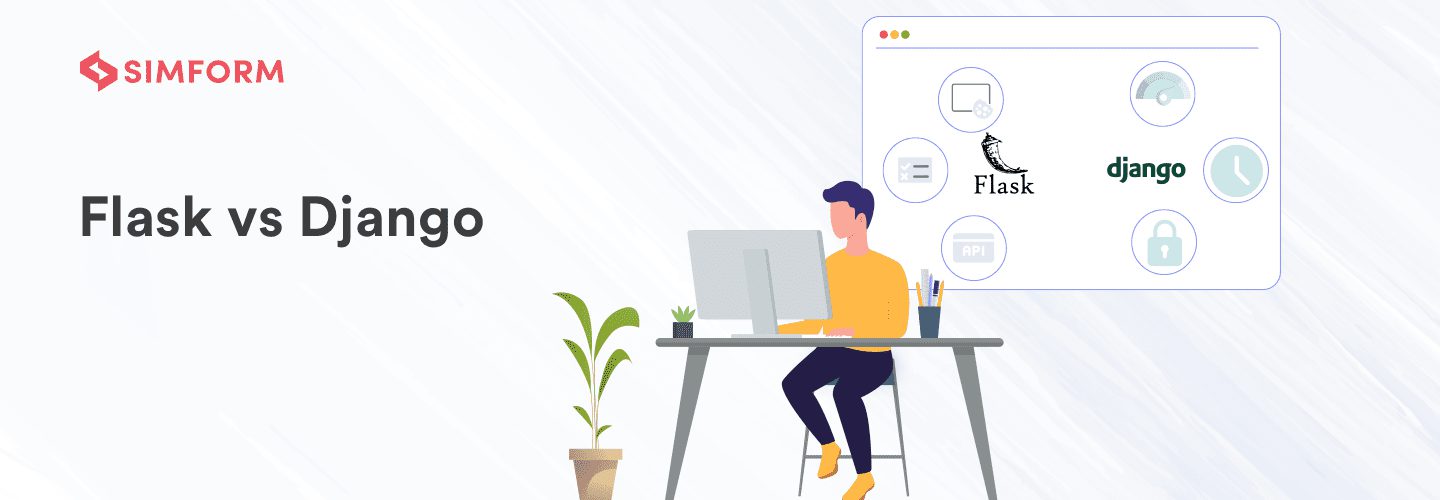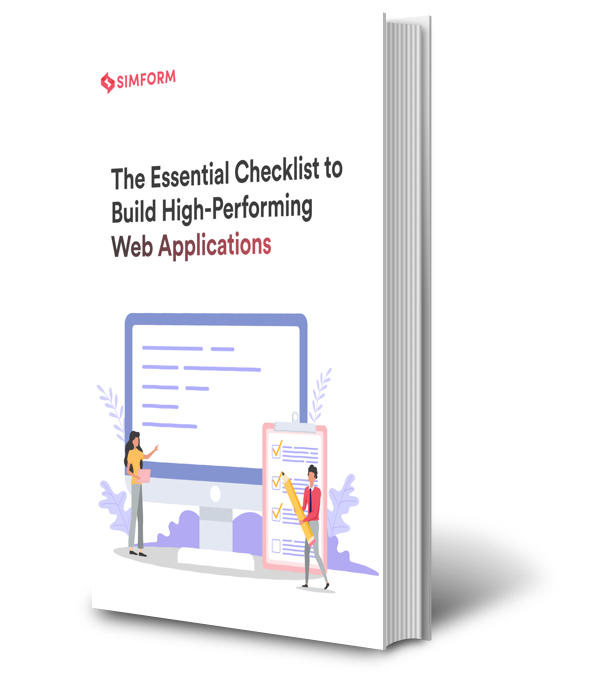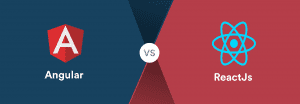Flask vs Django – 10 Must-Know Criteria for Comparison of Python Frameworks
It’s a daunting task to select a framework for backend programming languages, and today, we’re discussing frameworks for Python.
Github’s second most popular programming language—Python, has many options for choosing frameworks to write web applications in.
Secondly, every new project requires a unique solution and an explicit framework to structure the applications. If you’re exploring possibilities to choose the right framework and implement it for your web application, consider browsing through our web app development services.
Django vs Flask is one such comparison of Python frameworks that separates them from each other. While both Django and Flask relieve developers from code complexity, the comparison between them is evident since one is a full-stack framework and another is a microframework, respectively.
So without further ado, let’s get started.
What is Flask?- An Overview
Created by Armin Ronacher, an Austrian software programmer, Flask is a popular framework written in Python. It’s a lightweight, micro-framework with few or no dependencies that lets developers freely choose design patterns, databases, or tools. What’s more, if you’re looking for an effortless solution to build and scale your web application, Flask is your best bet!
Moreover, Flask follows two protocols to communicate with web servers and design website layouts:
- WSGI: It’s a protocol for communicating with web servers.
- jinja2: It’s a layout—template engine for consistent website design.
Market usage statistics
- 46% of developers use Flask with Python, according to The State of Developer Ecosystem 2020.
- 54.4% of developers using Flask rated it as the most loved web framework.
Use cases
- Smaller, less complicated projects
- Machine learning or deep learning integrations apps
- Serverless computing
- Apps using no database or NoSQL database
- Static websites with RESTful web services
Popular apps built with Flask
- Netflix used Flask APIs to bind different demand engineering segments and addressed challenges such as regional failovers and traffic distribution.
- Airbnb used Flask in one of its projects, Airflow, where it leveraged Flask-admin library to add admin interfaces.
- Uber used Flask to control optimization, balance dynamic pricing and manage supply positioning.
- Lyft supplies data to the web user interface using the signaling module.
- Pinterest is one of the largest websites built using Flask. It used Flask for its scalability and rich ecosystem.
- Twilio employed Flask to develop APIs as REST calls in a short time for its public and private communication APIs.
What is Django?- An Overview
Django is a popular web framework written in Python. This free, open-source framework was first introduced by two web programmers, Adrian Holovaty and Simon Willison, working at Lawrence Journal-World newspaper to develop applications. Named after the famous guitarist Django Reinhardt, its development began in 2003 while the first milestone release came out in September 2008.
Django facilitates faster and secure builds and frees the developer from mundane web development tasks, negating the need to create solutions from scratch. With multiple out-of-the-box features, it lets you create complete applications. It goes well with all kinds of websites and supports multiple formats (HTML, RSS feeds, JSON, XML, etc.). Additionally, Django comes with various security features and is ridiculously easy to scale.
Here are some cool usage stats for Django:
- It is a popular Python-based web framework with more than 23,000 watchers and 55,000 stars on Github.
- It powers 84,466 websites used across 54,014 unique domains.
- With 7.19% of projects coming from the domain, Science and Education is the most popular industry vertical using this framework.
Use cases of Django
- Web applications with ORM support
- API backend
- Scalable apps
- ML integration
- Data-driven apps
What popular apps are built using Django?
- Disqus, a blog comment hosting service, handles 50 million monthly comments and 17-billion monthly pageviews from 2-billion monthly unique visitors hailing from 191 countries. The entire project was built on Django from scratch and has scaled with ease ever since its inception.
- Spotify shares its vast music library with millions of users across the globe while rocking a swift backend and machine learning features simultaneously.
- Mozilla switched to Python and Django for all its newer components to better handle the daily increase in traffic and API.
- Dropbox added an array of features such as user history, synchronization accounts across different devices, add various file sharing options, and so on.
- Instagram leverages Django to scale with its continuously growing traffic and usage while retaining the simplicity of its UI/UX.
Pros and Cons– Flask vs Django
Pros of Flask
- Simplicity: Enables developers to take navigate around total control of web development. It’s easy to understand, develop and maintain applications.
- Easy to build prototypes: Allows developers to build quick prototypes provided the framework has fewer abstraction layers.
- Smaller codebase: Offers relatively small codebase size, which reduces application sizes.
- Flexible: Lets developers use external elements as per requirements. It doesn’t enforce strict design patterns, protocols or database selection. Almost all parts of the framework are open to change, unlike other web frameworks.
Cons of Flask
- Expensive for complex systems: Could be a costlier option if you want to maintain code in extra complex systems.
- Time-consuming in handling multiple requests: Takes considerable amount of time to serve numerous requests due to lack of async nature.
- Security breach: Less number of tools need more installation of modules that increases the number of third-party tools. This could pose security challenges.
- Expensive maintenance: Supports many libraries that could be a problem in the long run. For instance, when some become obsolete, maintenance gets expensive.
Pros of Django
- Faster development: Developers can use the batteries-included framework to add functionalities to reduce the development time and shorten the time-to-market.
- Scalability: Presents a lot of opportunities to scale seamlessly and keep up with the growing needs. Additionally, it supports a plethora of websites with millions of users and huge traffic.
- Secure: Facilitates the creation of secure websites and applications and protects them against common attacks such as cross-site request forgery, SQL injections, clickjacking, etc.
- Flexibility: Supports rapid changes during development, thanks to explicit programming and a host of libraries and packages. You can quickly pivot according to market trends while working on Django.
- Machine learning-friendly: Preferred for machine learning algorithms because of its computational and statistical capabilities. You can easily add advanced features to your application and woo customers.
- Rich talent pool: Written in Python, one of the most popular programming languages, its popularity translates into the availability of competent developers and an active community to fasttrack the development process.
Cons of Django
- Not suitable for smaller projects: Django is a coding-intensive framework occupying a lot of bandwidth and server processing time. So if you are not planning to scale up the project in the future, you may want to think long and hard before going through all the hassle.
- One request at a time: Unlike other popular frameworks, Django can’t handle multiple requests simultaneously, making it harder for developers to work on the underlying code.
- Slow evolution: Django is also considered to be monolithic. All the modules developed need to be backward compatible, thus slowing down the framework evolution.
Flask vs Django- Performance & Speed Comparison
How is the performance of Flask?
Flask is faster when it comes to processing JSON responses. It enables startups to quickly build an MVP, resulting in faster delivery times. In comparison with other Python frameworks, it is minimalistic, high-performant, and delivers intricate features rapidly due to fewer abstraction layers. However, Flask is not for you if your focus is development speed. Here’s a test result to support the stance:
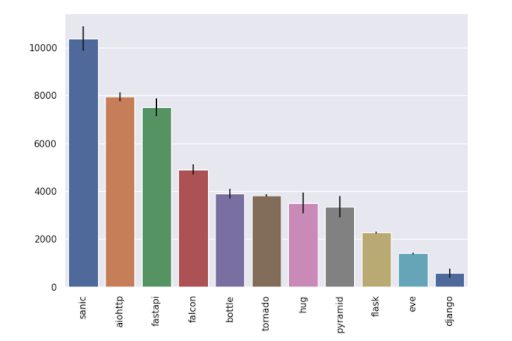
How does Django stand out in terms of performance?
Django isn’t the fastest framework out there. But then the following question should be— how fast do you want it to be? You might run into a few bottlenecks if you happen to employ Django for the wrong use case. In fact, you may experience a slow down when serializing and deserializing JSON strings, converting database queries into Python objects, and running requests through middleware.
However, you can easily bypass all these possible performance issues by sticking to the best development practices, deploying optimum hardware, and identifying the best areas of applications.
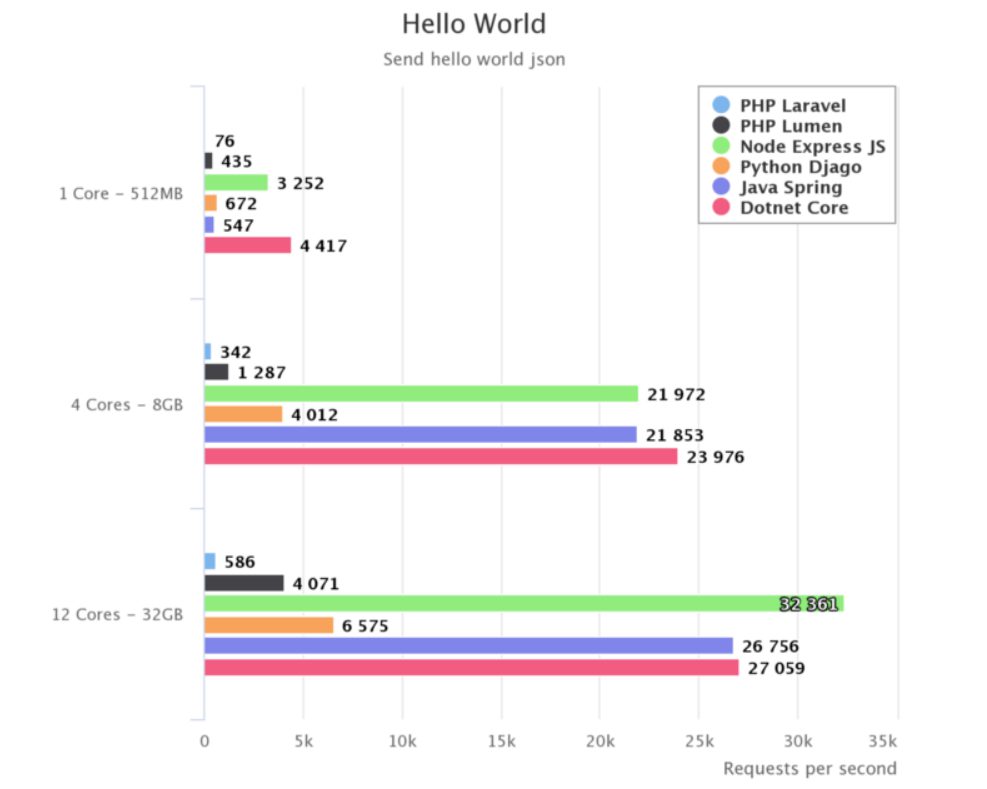
Source (Graph illustrating Django’s performance when serializing/ deserializing JSON strings)
Flask vs Django- Application architecture
What kinds of architecture does Flask support?
Flask doesn’t enforce any design or architecture pattern for applications. Instead, it offers a Blueprint to structure applications. The code is organized for more reusability of components. Moreover, the framework doesn’t involve or represent models since it is a microframework.
What kind of architecture does Django support?
It follows the MVT (Model View Template) architecture, which is a slight variation of the widely used MVC (Model View Controller) architecture. A significant difference between the two architectures is that the template file containing HTML and Django Template Language does the controller’s job of facilitating the creation of dynamic websites. Consequently, it gets convenient to manage scenarios where each user is supposed to have a personalized feed, such as on Instagram.
Django vs. PHP: Which is the Best Backend Framework?
Flask vs Django- Scalability
How scalable is Flask?
Flask offers good scalability in applications with good data storage support. It performs 2X times better when applications have a good amount of servers. However, when servers support global proxies as well as the local ones like threads, processes, and greenlets, it limits Flask’s scalability. But the best part is: most servers support these proxies, which makes Flask a suitable framework for scaling applications.
Is Django scalable?
The range of high-traffic Django applications such as The Washington Post, Instagram, Spotify, etc., speaks volumes of the framework’s scaling capabilities. It works flawlessly with various technologies while maintaining optimal performance and loading times. When it comes to scaling, it becomes crucial to optimize elements like DB, images, CSS, etc., and balancing the load with other resources. On top of that, you also need to make space for scaling by implementations such as CDN and cloud solutions. If anything, Django facilitates all these operations. It is among the best frameworks to deploy if your long-term plan is to scale up your web application.
Flask vs Django- Ease of Testing
Is it easy to test Flask applications?
With extensive support for different Python frameworks, Flask offers trouble-free testing for applications. You could use the Werkzeug test Client to test apps and handle the local testing contexts. It can be used in conjunction with testing solutions like pytest or unittest. Additionally, you can also use the Flask-Testing extension for extensive unit testing utilities.
How easier is it to test a Django app?
Testing is not much of an issue on Django with the array of tools provided to simplify the test-writing process. Moreover, its comprehensive documentation allows you to roll out efficient websites and applications free of anomalies. You can effortlessly test all the layers of logic and come up with a bug-free end product.
Flask vs Django- Microservices compatibility
How is the microservices compatibility of Flask?
Flask works best when used to build microservices as:
i.) it doesn’t enforce any design pattern or dependencies. Developers can use extensions and deploy high-performing microservices.
ii.) it offers a wrapper called flask_nameko to interoperate with Nameko, which is a Python microservices framework.
Both ways, Flask is extremely useful and flexible to build microservices.
Is Django compatible with microservices architecture?
In a word, yes! Features like rapid development, built-in security features, and versatility make Django a fine backend technology for microservices architecture. While Django projects can usually be scaled exponentially, breaking it down into smaller microservices functionalities is a good idea and simpler with this framework. One of the reasons you may want to include Django in one of the microservices is to introduce ML features into your project.
Flask vs Django- Database support
What kinds of the database does Flask support?
Flask remains un-opinionated in supporting databases. So, the developers have freedom to choose databases. The framework uses DbAdapters for supporting different databases. Flask, with the use of SQLALchemy, supports a wide range of SQL databases and also works best with MongoDbAdapter for compatibility with MongoDB databases. Moreover, one can set custom DbAdapters to support different databases.
How good is the database support for Django?
Django provides official support for PostgreSQL, MariaDB, MySQL, Oracle, and SQLite. While it runs seamlessly with these five databases, it also works well with other database backends by third parties. Additionally, Django gives you the liberty of using multiple databases at a time if the project demands. It’s safe to say that the framework won’t disappoint you while setting up databases for your website or application.
Flask vs Django- Community
How big is the community around Flask?
Flask offers great community support. Its popularity is evident, for many big firms are using the framework. Its well-framed documentation let’s developers create sophisticated and lightweight web apps. In addition to this, there are open-source communities such as Stackoverflow and Github that proffer adequate support to developer queries.
Below are some useful community platforms for Flask.
How big is the community around Django?
Django enjoys the perks of a large community around Python. When it comes to raw figures, the Django community has more than 82,000 members on Reddit, 250,000+ questions tagged in Stack Overflow, and 23,000+ watchers on Github. As a matter of fact, the community is only growing with time, and we can expect to see a healthy amount of activity around this framework in the future. You can easily find various Django enthusiasts on other platforms as well– Discord server with 3,400 members, Telegram group with 6.08k participants, and various thriving Slack channels among others.
Node.js vs PHP- A Head to toe Comparison of Server-side Technologies
Flask vs Django- Hiring developers
How convenient is it to hire Django developers?
Due to its easy learning curve and fewer abstraction layers, there’s an abundance of Flask developers, which means it won’t take too much effort to hire one. However, it’s important that you hire someone with a thorough knowledge of software development fundamentals and design patterns. The average salary for a Python-Flask developer in the USA is $115,000 a year or $58.97 an hour, according to talent.com, whereas experienced developers make up to $1,80,000 per year.
How convenient is it to hire Django developers?
The large community of developers around Django and an increasing number of skilled Python developers make it easier to hire Django developers. The average hourly rate for Django developers is $61-$80, so you should not find it challenging to find one or some for your projects. With only a few things in mind, such as the portfolio and experience, you should be able to decide upon the right developers for you.
Conclusion
Both Django and Flask are popular frameworks that build high-quality apps, yet choosing one that matches your business goals depends on the overall purpose of the development teams.
For instance, startups’ priority would be team size and the learning curve required by the framework. In contrast, big enterprises with experienced teams have explicit preferences for the project’s scope and requirements.
You should go with Flask if,
- Your priority is a shorter and easy learning curve.
- Your project doesn’t require full-stack solutions from the framework.
- Your development team’s priority is gaining experience and learning opportunities.
- You want to build small and less complicated projects.
- You want to build apps with serverless computing.
- You need to build rapid prototypes of the projects.
- You want to build static websites and RESTful web services.
You should go with Django if,
- You want to build customizable and dynamic social media websites.
- You want to build ML integrated apps for superior personalization features.
- You want to build a CRM for an eCommerce platform or other high-load booking engines.
- You want to build a secure app for B2B communications.
- You want to build data-driven apps for Travel, Food, and Hospitality industries.
- You want to build apps that leverage data analysis and visualization.

